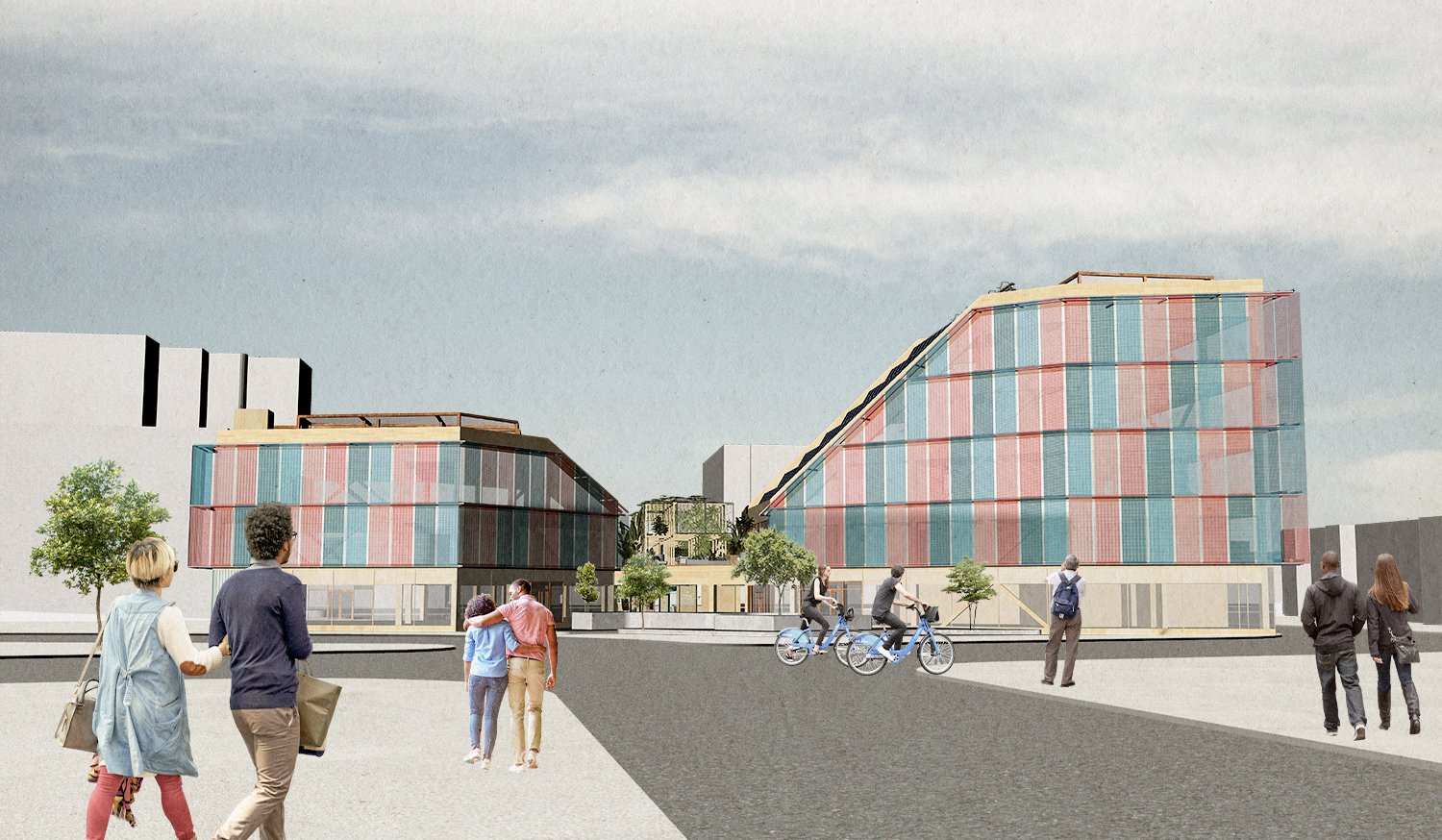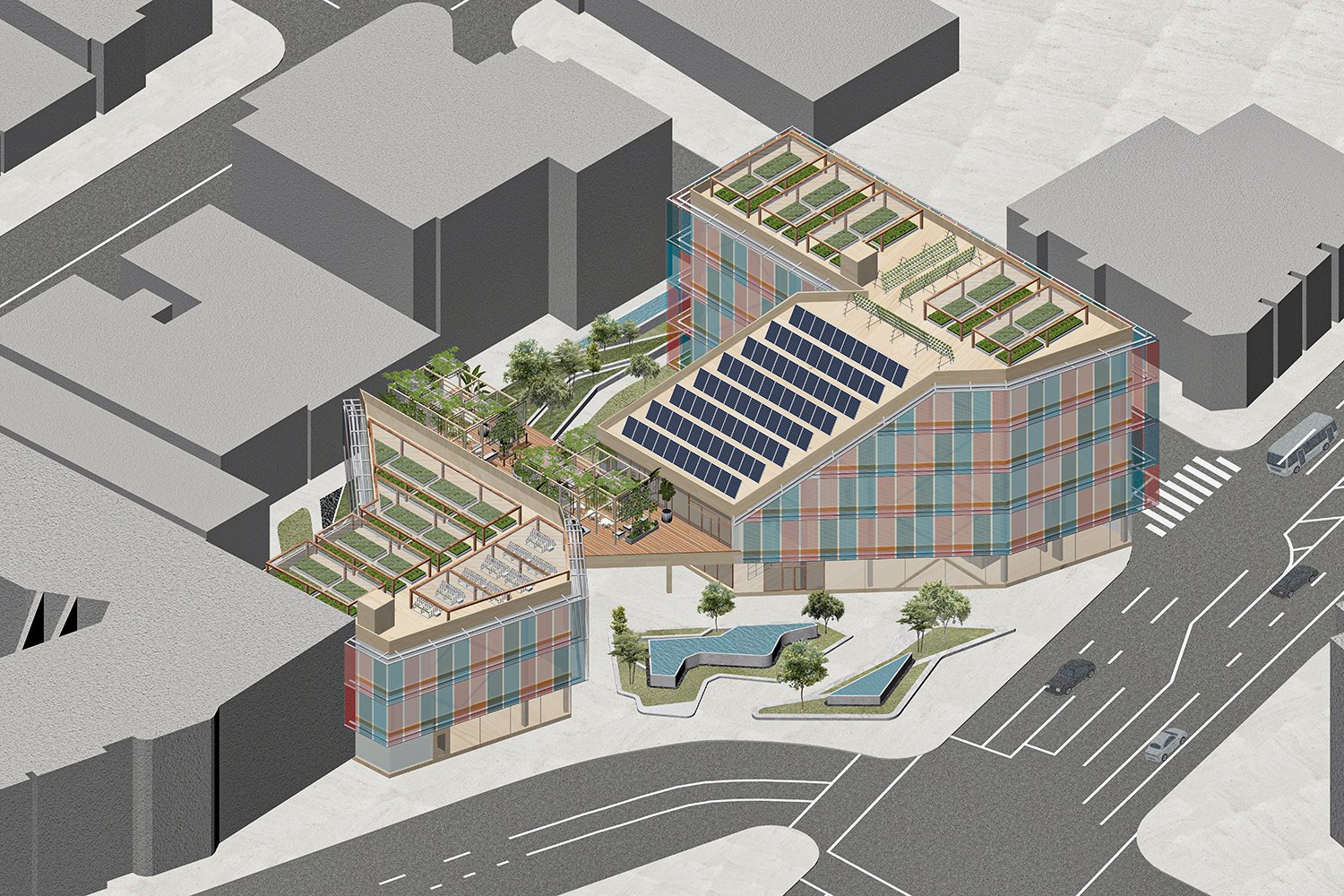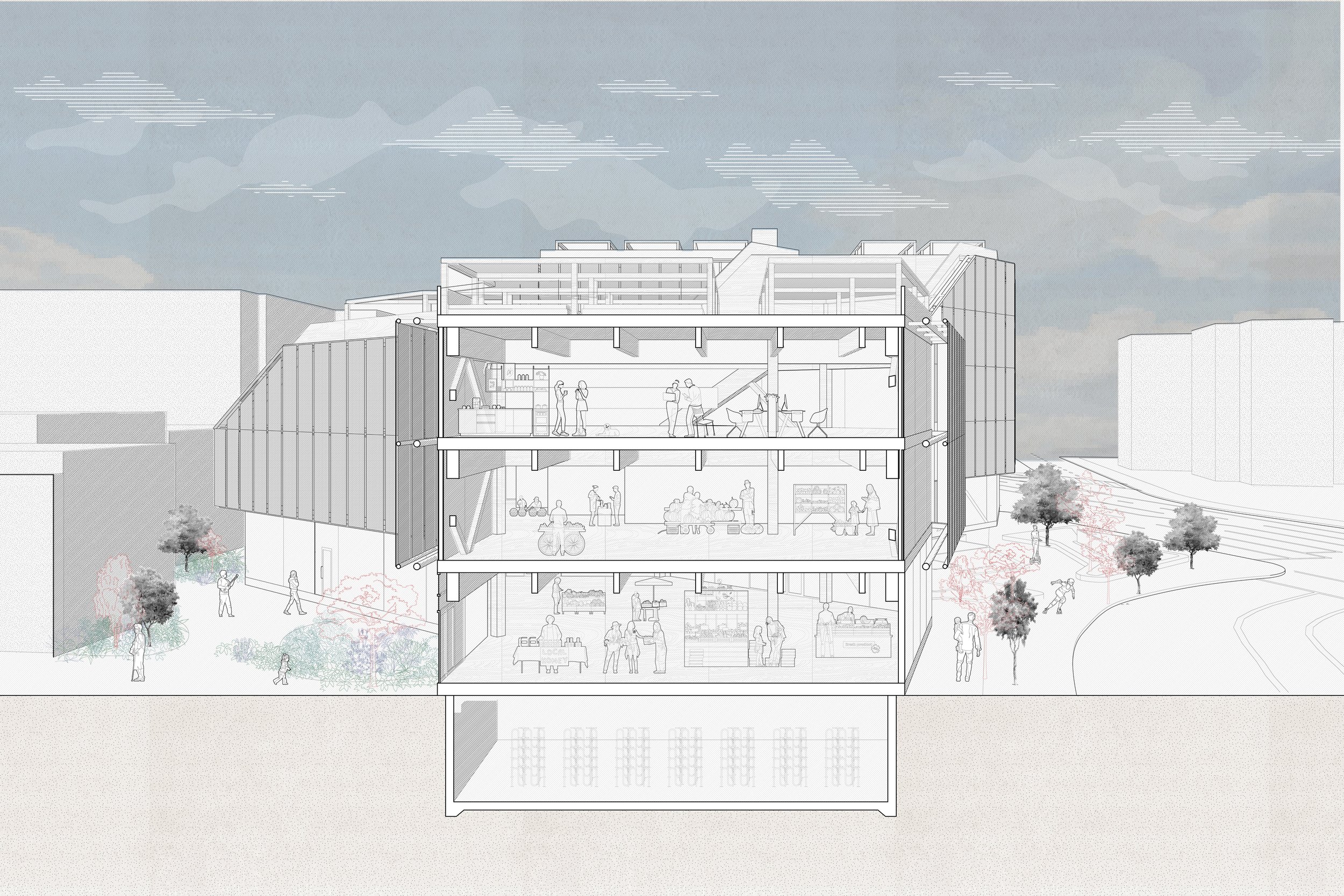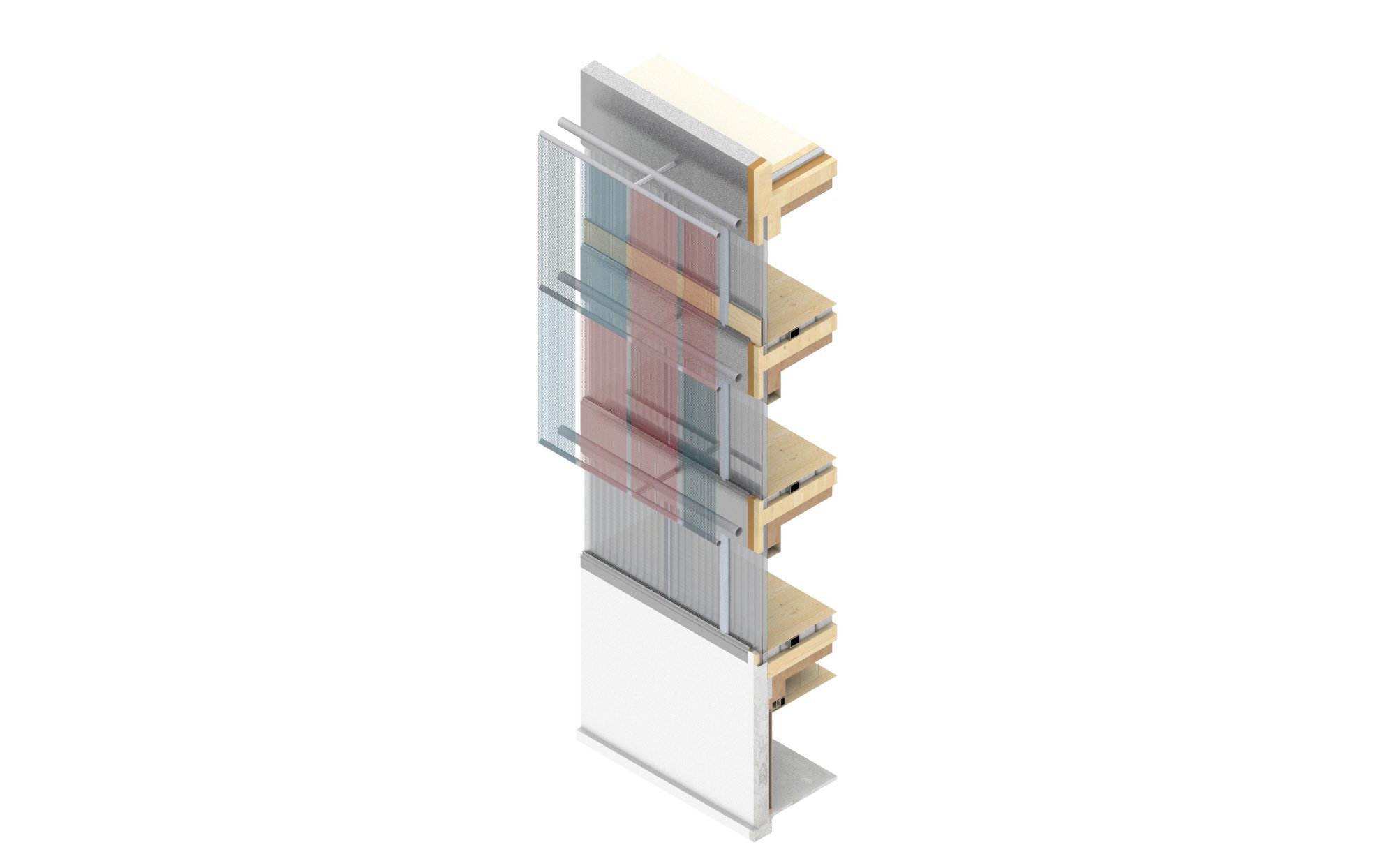
“So Just'“ - USC Social Justice Center
Community Engagement, Service, Research Center + Cultural Food Space
4th Year Studio | USC Spring 2022
Site: 747 N Main Street, Los Angeles, CA 90012 | 33,254 sf
Nestled in the heart of Los Angeles' Historic Cultural neighborhood, the USC Center for Social Justice stands as a symbol of hope and collaboration. This innovative project is designed as an incubator where USC faculty and students from various disciplines engage with the community on issues of social justice. Situated amidst a melting pot of cultures, including Chinatown, Little Tokyo, and Olvera Street, the center leverages its prime location to foster a deep connection with local heritage.
The Center is divided into three core departments - service, research, and community engagement. Each department is dedicated to addressing social justice issues, fostering an environment of learning, activism, and positive societal change. Recognizing the importance of cultural identity and heritage, the Center features a unique cultural food space. This area is not just a dining location but a vibrant cultural hub. It offers a plethora of diverse culinary options, each telling the story of the neighborhood's rich cultural backgrounds, from Mexican and Italian to Chinese influences. This space is designed to be more than a place for meals; it is a venue for cultural storytelling, where food becomes a medium for education and appreciation of the diverse community.
Its location, a seven-minute walk from the Metro L Line and in an area with a high walkability score, positions it perfectly as a gathering spot for community members. Regular events, workshops, and forums are held to involve the community, ensuring that the Center is not just in the community but a part of it.
Reflection
Embarking on the 'So Just' project during my time at USC, I was immersed in the vibrant diversity of Los Angeles' Historic Cultural neighborhood. The most meaningful part of the process was doing primary site research and gathering information about the site through various sources which included interviewing residents, documenting monuments and their historical significance, participating in local activities on the weekends, and creating a material palette from surrounding buildings. Additionally, since this was a real project in the works at USC, I was able to engage with a variety of project stakeholders and presented my learnings from the site research and proposal. It was important to me that the project was executed with cultural sensitivity and I was glad our insights was valuable for their decision-making.













